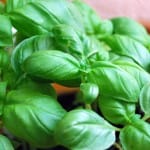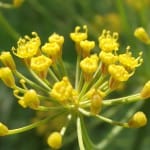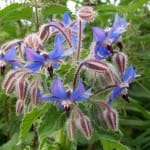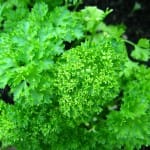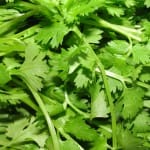Source(s): Wayne McLaurin, Professor Emeritus of Horticulture, The University of Georgia, College of Agricultural and Environmental Sciences
Growing Herbs
Growing herbs in southern gardens is simple and rewarding. Herbs provide seasonings for food, pleasant fragrances and interest to landscapes. Herbs are easy to propagate.
Herbs are propagated from seed, stem cuttings, division and layering. They are available from nurseries, garden centers, speciality shops, as well as in the traditional manner from friends and fellow gardeners who are thinning their herb gardens.
Seeding Herbs
A number of herbs, particularly annuals, can be grown from seed in much the same way as vegetables and flowers.
Direct seeding in the spring can be successful, but seeding is more successful if begun indoors in late winter. Use clean flats which are deep enough to give the root area a proper amount of space for growth.
Fill the container with moistened mix and firm the surface. Make shallow indentations, and sow the seed evenly at the same depth given on the package; most seeds are planted at a depth approximately twice their diameter. Very small seeds should be simply pressed gently into the surface of the soil and barely covered. Lightly water the surface, and place the container in a warm, well-lighted area or under fluorescent lights, not in direct sunlight. The container can be covered with plastic wrap or placed in a plastic bag, but remove the bag as soon as germination occurs. When the seedlings have two or three leaves, they may be transplanted into small pots or, if the frost-free date has passed, into the garden. “Harden-off” transplants by putting them in their pots outside in light shade for a few days before planting them in the garden. Water the transplants well initially and for the first week after planting.
Cutting Herbs
Many herbs such as lavender, rosemary, scented geraniums, and lemon balm can be propagated through cuttings. Some, such as French tarragon, cannot be propagated any other way. In spring or summer, cut about 3 to 5 inches of new growth containing two or more nodes. Make the cut just below a node where a leaf joins a stem, remove the lower leaves, and dip the cut end in rooting compound. The cuttings should be inserted past the first leaf node into the potting medium. The medium should be kept slightly warm and moist until cuttings have rooted, usually about three to six weeks. Root cuttings are done similarly, except the cutting is made from the budded root of the established plant and buried in the medium.
Dividing and Layering Herbs
Herbs that form clumps with many fibrous roots can be divided. Slice through a section of the mass with a shovel or dig up the entire plant, split the mass, and replant the divisions. Water the division well after transplanting to promote root-soil contact for quick re-establishment. Herbs propagated by division generally benefit from being dug up and divided every few years.
Another method of propagation is layering, bending a portion of a stem to contact the soil, pinning it in place until rooted, then removing and planting the rooted portion. Layering can be done in the spring or summer. If done in late summer, the plant can be left over the winter and transplanted the following spring.
Annual and Perennial Herbs
Most Common Methods of Propagation:
Annuals (seed)
- basil,
- borage,
- caraway,
- chervil,
- cilantro/coriander,
- dill,
- parsley (biennial)
Perennials (seed)
- hyssop,
- lovage,
- marjoram,
- summer savory,
- thyme,
- fennel
Perennials (cuttings)
- artemisia,
- bay,
- scented geraniums,
- germander,
- lavender,
- lemon verbena,
- rosemary,
- rue,
- sage,
- santolina,
- French tarragon,
- winter savory
Perennials (divisions)
- chives,
- lemon balm,
- mints,
- monarda,
- sorrel,
- tansy
Resource(s): Herbs in Southern Gardens
Center Publication Number: 258
- Growing Herbs - September 24, 2013
- Harvesting and Preserving Herbs - September 24, 2013
- Herbs in the Landscape - September 24, 2013
